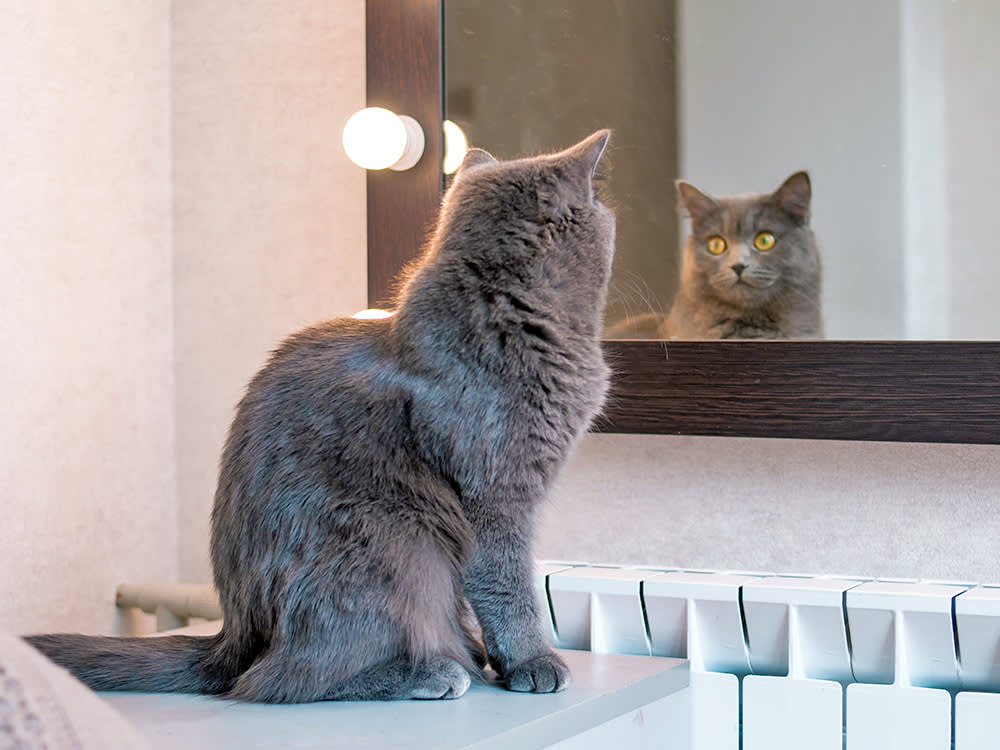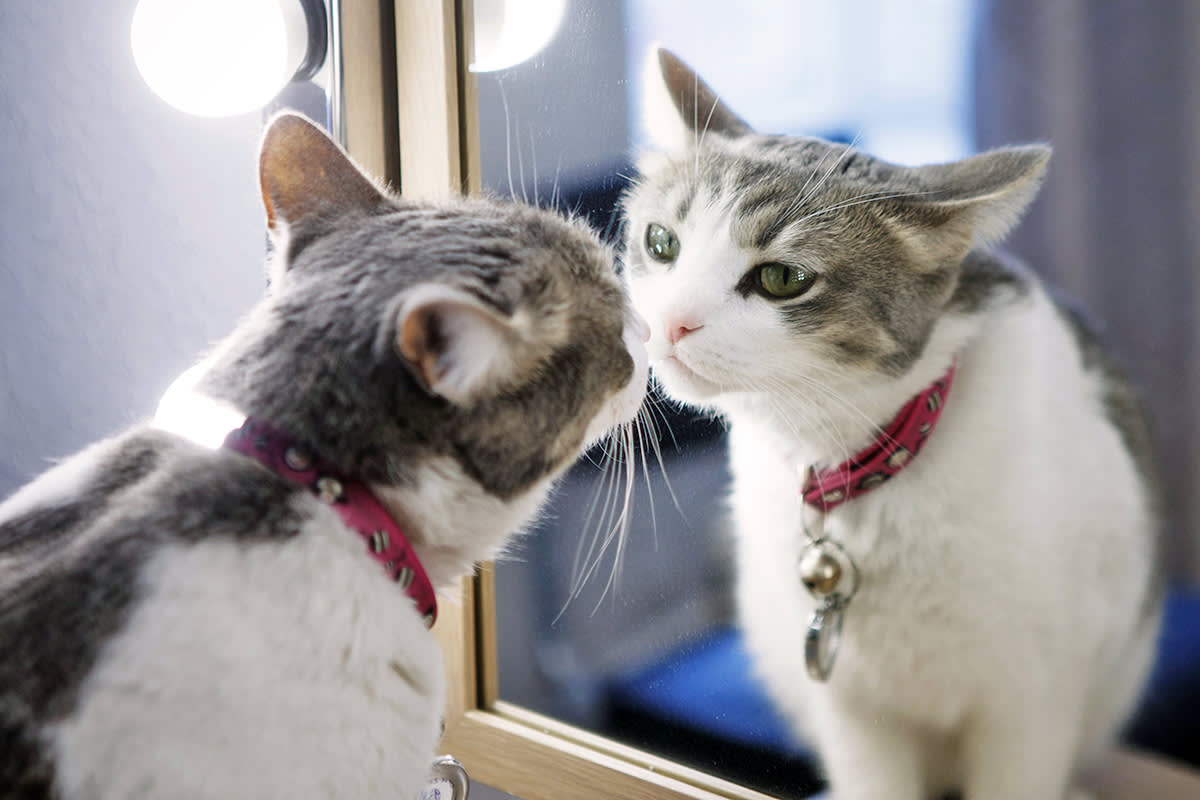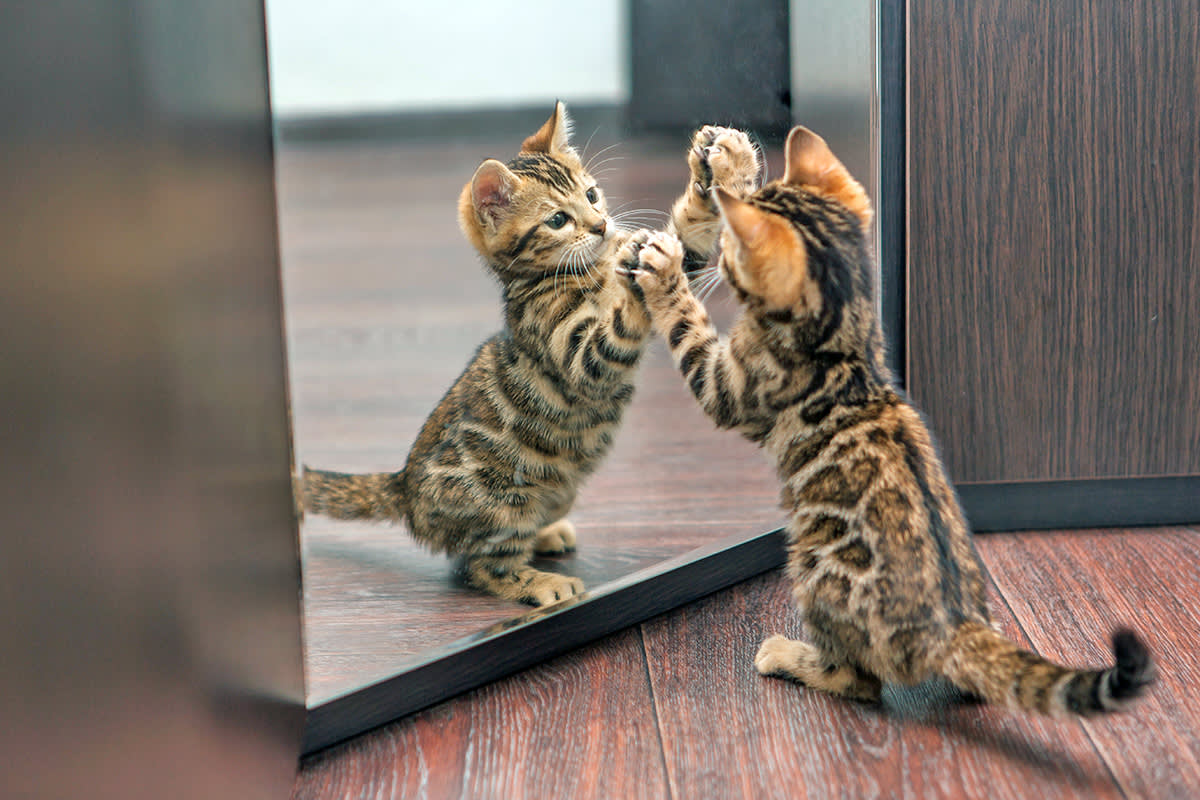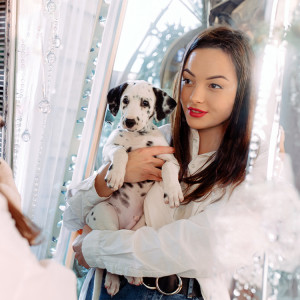Why Do Cats Freak Out When They See Themselves in the Mirror?
The truth behind all those hilarious scaredy cat TikTok videos.
Your cat is your favorite little being. They are smart, sweet, maybe a little hyper, and definitely a little weird. According to TikTok videos, though, some cats’ weird thing is to go a little berserk when they see their reflections. One look in the mirror can provoke intrigueopens in new tab, bewildermentopens in new tab, and even aggressionopens in new tab — all making it look like cats freak out, at varying levels of intensity, when they see themselves in the mirror.
This little guyopens in new tab, for example, looks like he is absolutely losing it — back arched, tail askew, ears down. But actually, science tells us, what you’re seeing probably isn’t a freak-out — it’s curiosity. And in this case, it didn’t kill the cat, it just made them look really, really silly on a viral video.
Save on the litter with color-changing tech that helps you better care for your cat.
Jokes aside, we know this because of something called mirror self-recognition (MSR) tests. American psychologist Gordon G. Gallup Jr. developed the test in 1970opens in new tab to determine if animals, including cats, have self awareness. Referred to as the mirror self-recognition (MSR) tests, these assessments explore whether an animal recognizes their own reflection as themselves or as another creature.
Turns out, cats have a zero percent success rate in these MSR tests and typically think their reflection is another cat, an irrelevant stimulus, or something to briefly investigate before ignoring, studies show. (Only humans, great apes, bottlenose dolphins, and some birds have been recordedopens in new tab passing the mirror test for self-recognition.)
How much do you spend on your pet per year?
Despite what you see on TikTok, studies show that cats’ aggressive responses — including hissing, defensive crouching, and territorial displays — make up only about 10 percent of behaviors directed at reflections. The majority of cats react with curiosity rather than fear or what looks to you like a full-blown kitty meltdown, explains Linda Hall, a cat behavior and training expert at The Cat Behavioristopens in new tab. In other words, cats actually don’t freak out that much when they see their own reflections.
“Another cat coming into your territory can take your resources — so, if they truly thought it was another cat, they would most likely be very scared, territorial and stressed,” she explains. “That doesn’t happen with the mirror because there is no scent.”
This is because cats identify other animals primarily by scent, not sight, studies show. Their visual systems are optimized for motion detection and night vision rather than detailed facial recognition, creating a fundamental mismatch with visual-only mirror tests.
“They see the reflection [moreso] as a fun, moving object which requires investigation — much like the squirrels outside the window,” Hall adds.
They don’t know what they’re looking at — but that doesn’t make them stupid.
Cats’ evolutionary background as solitary hunters may explain their mirror-related behaviors and responses. Unlike highly social animals, such as great apes, elephants, and dolphins — which need to navigate complex group dynamics and recognize individual members — cats evolved as independent predators, and distinguishing between self and others provided fewer survival advantages.
This evolutionary background likely explains why cats haven’t developed the same neural adaptations for self-recognition that we see in species with cooperative behaviors and social hierarchies, studies showopens in new tab.
While tests that more accurately gauge cats’ experience of self awareness continue to develop, videos of their mirror interactions are both entertaining and scientifically useful. One 2022 study publishedopens in new tab in Animal Behavior and Cognition analyzed 57 YouTube videos showing cats interacting with mirrors and found no evidence supporting self-recognition. Cats displayed five distinct behavioral patterns that all failed to meet mirror self-recognition criteria: mostly confusion, brief investigation, and occasional aggression.
Cats’ reactions to mirrors can vary depending on a number of factors, including breed and age. Turkish Van cats, for example, have shownopens in new tab the highest level of aggression towards other animals, according to a study of more than 5,000 cats. Meanwhile kittens, while in the crucial social development age range of eight to 16 weeks, are more likely to exhibit play responses toward what they believe to be another cat.
And they definitely have self-awareness.
Dawn LaFontaineopens in new tab, cat expert and founder of Cat in the Box, notes that just because cats don’t recognize themselves in mirrors doesn’t mean they lack self-awareness entirely. Cats rely much more on scent than sight to recognize other animals, so the mirror test “might not be the fairest test of cats’ cognitive ability.”
“They most certainly do [have an idea of self], or they wouldn’t be able to judge whether they have the skills to leap to the top of the refrigerator,” she says.
In fact, studies show cats are actually great at independent problem-solving, spatial memory, and observational learning. One 2015 study found opens in new tab that 79 percent of cats exhibited “referential looking between the owner and the object” when confronted with unfamiliar stimuli, showing cats use emotional information from pet parents to guide their behavior in new situations. Another study found cats have demonstrated “fully developed concepts of object permanence” in repeated tests, starting as young as eight weeks old.
What’s more, the brain of a cat has a similarity of 90 percent to the human brain, with about 300 neurons in the cerebral cortex — the section of the brain where complex thought processes, decision-making, and problem-solving take place.
While sight might not be the strongest way cats explore the world around them, they have other ways to scope that out — like an impeccable sense of smell. You may have even noticed your cat collecting data with something called a flehmen response (aka “stank face”) — when a cat opens their mouth to collect information using both taste and smell.
Cats clearly have a way of connecting with the world around them that can’t be captured by mirror-specific studies. But further studies are in the works to reveal more about how and what, exactly, cats perceive.
New neuroimaging technologyopens in new tab advances and the development of alternative testing paradigms may reveal forms of self-awareness in cats that current methods cannot detect. In other words, we’ll eventually just have more ways to measure how impressive our cats are — and brag about them even more.







